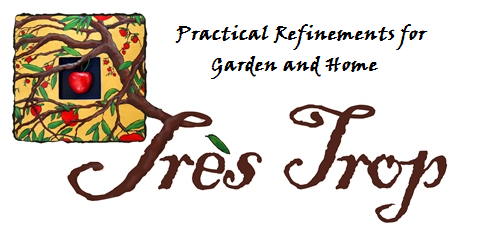"Three Hundred Years of Dreaming"
Posted by Martha Ellis Kelley on
"Until I've got my dowry safe about me, I'm no married woman. I'm the servant I've always been without anything of my own . . . There's 300 years of dreaming in those things of mine and I want them. I want my dream.
Mary Kate (Maureen O'Hara) The Quiet Man
In 1995 I purchased what remained of an 18th century farm in Warrenton, VA. It even had a name "Highlands". Attached to the fairly extensive and dilapidated farmhouse was a porous shack - a log cabin. This was the original dwelling - 16' x 30' with two stories - and an unusable mess. But from between 1735 +/- and 1800 it was the main residence. In that time, two or three generations of a family named Smith were born, raised and many of them died in this shack. I have spent the last 20 years restoring Highlands - but my eyes were always on the Cabin.
Several years ago, my sister introduced me to the books of a design stylist in Sweden named Nina Hartmann. Our styles are different - mostly because of our cultural background - but her thoughts and images resonated with me. So, I added her books to the Tres Trop Inventory.
Last year, Nina published "A Divine Mess". In it, she articulates with word and image her personal journey in acquiring the antique and vintage. Reading the book and absorbing its visual beauty inspired me to examine my motivations and inspirations. You see, once the Cabin was restored, I realized it was simply the most ambitious example of what I had been doing all of my adult life - trying to turn sows' ears into silk purses. Contrary to popular belief, it can be done.
Women of prior generations weren't guaranteed the sense of self and individualism we take for granted. In the absence of wealth, their survival and security were dependent upon entering into a good marriage. Their value was established by what they brought to a marriage - social status, possessions, cash, energy and presumptions of fecundity. The Quiet Man was produced in 1949 - just two generations ago. The audience of the time understood this reality along with its inherent risks and conflicts.
Women have been relied upon to provide the necessities and comforts of home for a long, long time. Until very recently, the labor to pull it off was staggering. In addition, if they survived childbirth, they knew most of their children would not survive infancy.
So, when I hold a platter, a plate, a mixing bowl or piece of handwoven cloth from another time, I am in the realm of those astonishing women who could create and take delight in beauty while they were exhausting themselves maintaining the family and home.
To me, the most poignant image in Nina Hartmann's books is found on page 125 of "A Divine Mess". It is a large stoneware basin repaired with metal staples. While beautifully designed, it was never more than an article of utility. However, when broken, it was too precious to discard. It served for dry when it could no longer serve for wet. A book could be written about that basin.
Tres Trop is pleased to offer for sale three books written by Nina Hartmann - "Among Vintage and Friends"; "A Winter's Tale", and "A Divine Mess."
Share this post
0 comment


